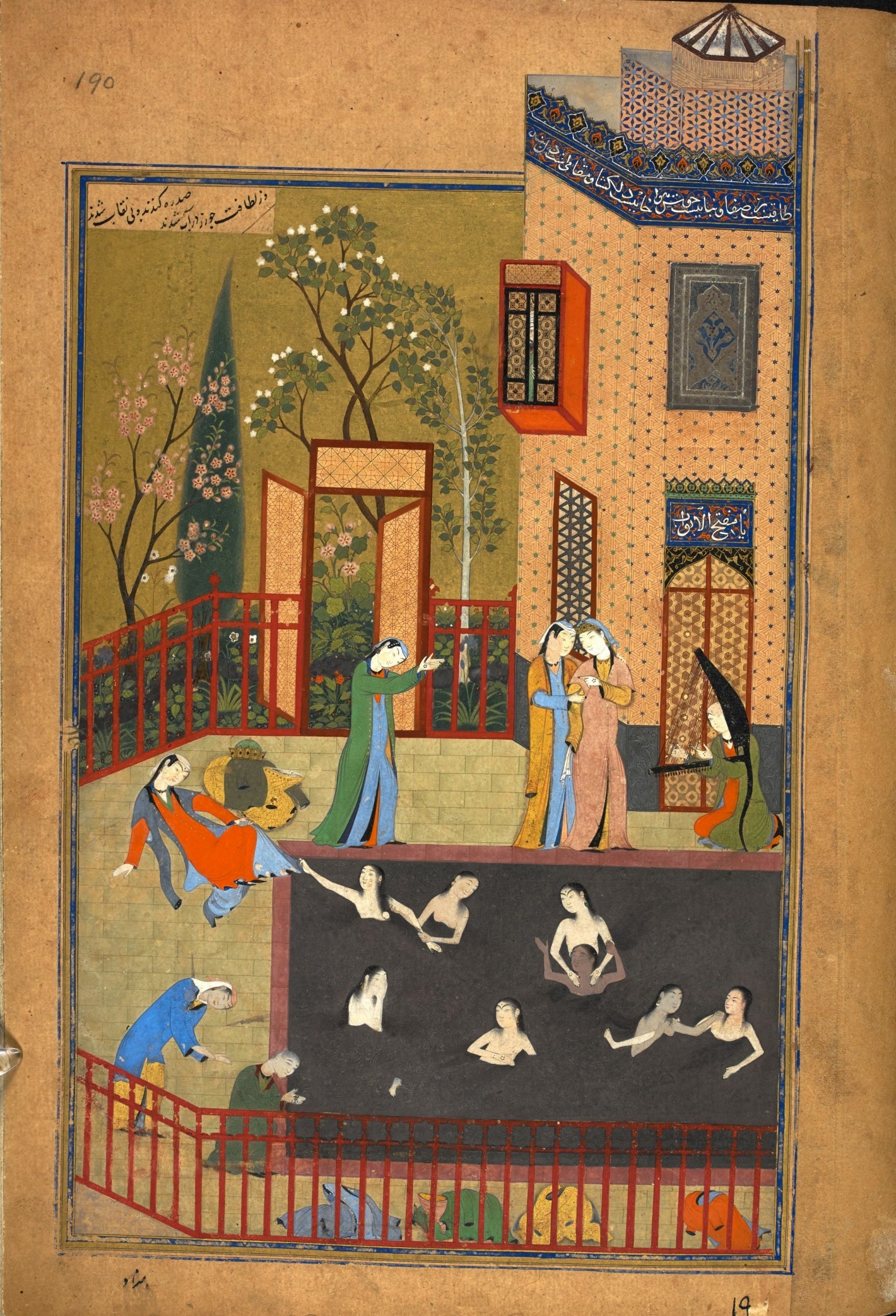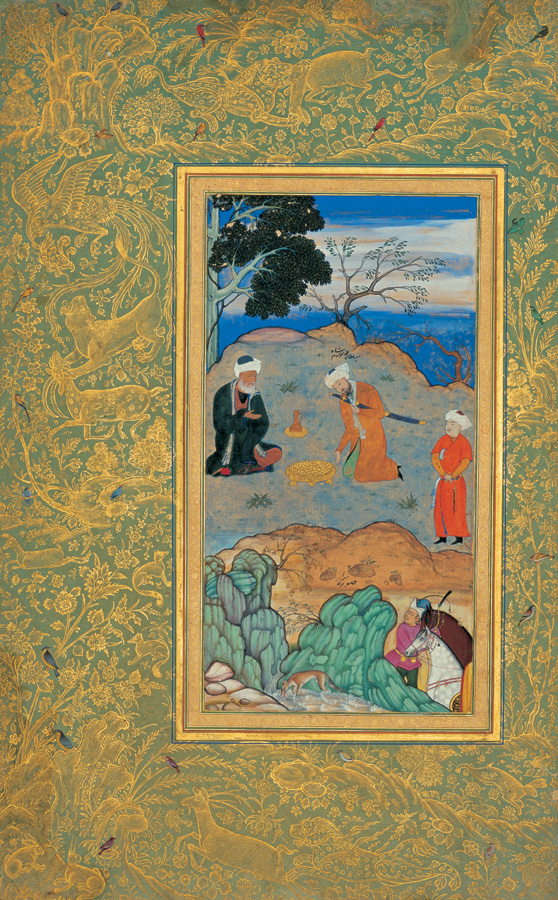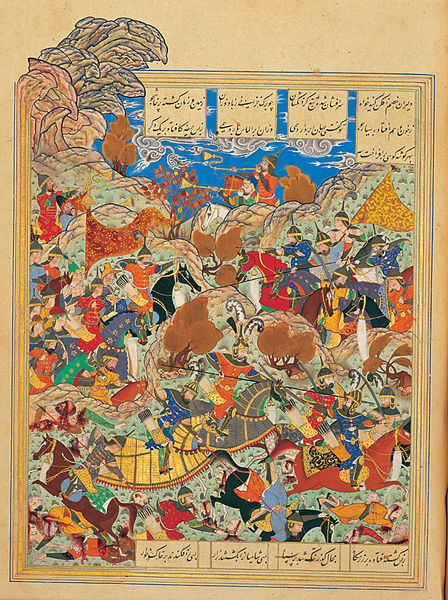KamÄl ud-DÄ«n BehzÄd
Kamāl ud -Din Behzad Herawi (* 1460 in Herat, † 1535 ) was a Persian painter and scholar, and is regarded as the most important representative of Persian miniature painting. Him the title " Ustad " ( master ) was therefore additionally awarded. Behzad is a Persian name translated literally means bestgeborener, pure or noble.
Life
Behzad worked in the court of the Timurid Herat, where he was under Sultan Hussein Bayqara the head of the royal library. After the death of the Sultan, he was personally invited by Shah Ismail safawidischem to Tabriz, there to take over the management of the Royal University Library.
Many historical works Behzad originated mainly in the period 1486-1495 in Herat. About thirty works are still preserved.
Although the painting of human figures was forbidden in the Muslim world, he established a multi-faceted and progressive way of working. Behzad's works are known for its pungent colors, captivating gestures and an emotionally charged statement.
Many famous literary works of the time were illustrated by his paintings, including the Khamsa by the Persian poet Nizami ( now in the British Museum in London), The history of the Tamar Lane (now Princeton University in the U.S.) or Mir Ali Sher Nava'is Khamza (now Bodleian Library in Oxford).
Writings
- Hossein - Ali Nouri Esfandiary (ed.): The Rubaiyat of Omar Khayyam in English Verse by Edward Fitzgerald, with miniatures by Hossein Behzad. Shumposha Photo Printing, Japan 1970.
Literature
- Thomas W. Lentz, Glenn D. Lowry, Timur and the Princely Vision. Persian Art and Culture in the Fifteenth Century. Los Angeles County Museum of Art Arthur Sackler Gallery, 1989.
Other references in the literature
- Orhan Pamuk: My Name is Red. Frankfurt am Main, 2003. ( The book deals with the Iconoclastic Controversy in the Ottoman Empire to 1590th A very beautiful descriptions of the books and illustrations from the period. )










